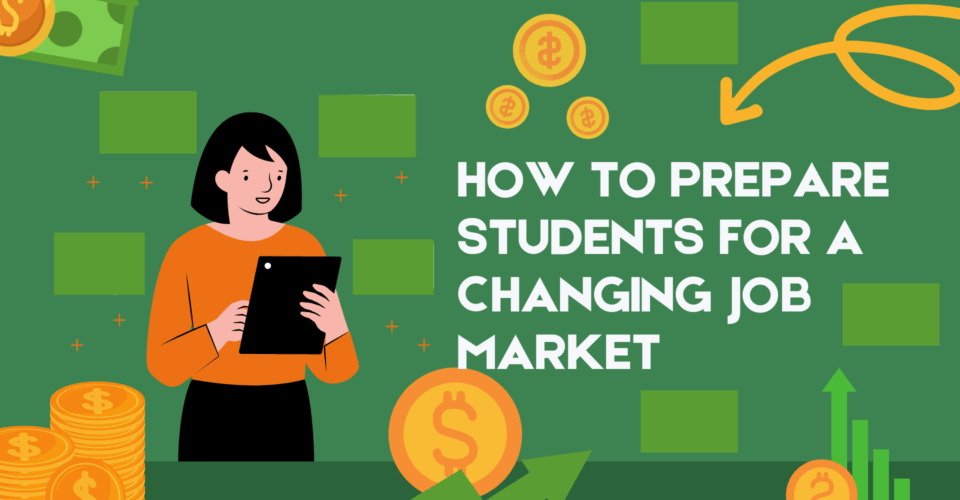The green economy isn’t just an environmental imperative—it’s a human one.
As we transition toward a more sustainable, low-carbon future, the conversation must move beyond emissions and renewable energy. We must also reimagine how learning is delivered, who it reaches and how it maps to opportunity.
Upskilling for the green economy isn’t about preparing a select few for specialized roles—it’s about embedding green skills across all sectors and meeting learners where they are.
What is the green economy?
At its core, the green economy is an economic system guided by environmental principles. It aims to reduce carbon emissions, improve resource efficiency and prevent the degradation of ecosystems.
But a just transition to a green economy also comes with social responsibility: to ensure the costs and benefits of this transition are shared equitably across all populations.
In a green economy, some jobs will inevitably be phased out. Examples include roles in fossil fuel extraction and refining as well as agricultural roles using techniques that are no longer sustainable.
As these jobs decline, others will emerge: sustainable architects, EV technicians and environmental scientists. But many of these emerging jobs require an advanced degree, which means that they may not be equitably distributed; nor are they an “even swap” for the jobs being eliminated.
And if we only focus on the traditional “green” sectors, we’ll miss the bigger opportunity.
Green skills for every job
Green skills aren’t just for green jobs. These skills can be integrated into nearly every industry:
- IT professionals can learn to manage energy use in data centers.
- Truck drivers can be trained in environmental compliance and emissions reduction.
- Electricians can upskill in solar panel installation and energy-efficient systems.
- Maintenance staff can support recycling, repair, and sustainable logistics.
Embedding green skills across industries allows more people to participate in the green economy.
Many workers may worry about changing paths or keeping up with skill demands. But a lot of these workers already have transferable skills—what they need is guidance, recognition and targeted training.
That means offering clear pathways for reskilling and upskilling—especially for individuals in jobs likely to be automated or eliminated. It also means helping workers identify their existing strengths and how those can be mapped to emerging green roles.
A retail floor associate is already trained in stocking and customer service. If they pursue additional training on sustainable fashion and eco-friendly materials, they could share this knowledge with customers.
At the corporate level, this initiative could increase sales, reduce waste and contribute to positive corporate branding. Meanwhile, the worker has gained a green skill and knowledge that will help them in this and any future jobs.
Project-based learning and work-based training are key. Effective programs build on what learners already know, helping them close specific skill gaps without overwhelming them with one-size-fits-all solutions.
Closing economic gaps
A just transition means that groups who are underrepresented in the green economy aren’t left behind. Many green jobs are accessible without a four-year degree, making them an ideal opportunity to close economic gaps.
That’s why we must ensure green economy training programs are affordable, localized and flexible. Community-based initiatives, “earn and learn” models and strong employer partnerships can create the support structures needed to turn green jobs into real pathways for advancement.
For example, PowerCorpsBOS offers paid, 10-month workforce development in green industries. Dorchester Bay offers a Bridges to Green Jobs Training Program that helps community members transition into climate-friendly careers.
If you’re not sure where to start, check out your local library, which may have programs, resources, or information.
What we can all do today
The transition to a green economy can feel overwhelming. But we all have a role to play—especially those of us in learning, workforce development or community leadership.
Educators and edtech companies should integrate green skills into existing programs, from K12 to higher ed and workforce development. Career and technical education, community colleges and digital training programs can all embed sustainability concepts alongside soft and technical skills.
Employers should partner with local training providers, recognize prior learning and support continuous upskilling for new and current employees. They should also invest in inclusive, skill-based hiring practices and provide pathways for career mobility.
Policy leaders should fund and support programs that prioritize equity in the green transition—through subsidies, tax incentives and infrastructure investments. Legislative support is critical to scaling access and removing systemic barriers. We also should support legislation that ensures a just, inclusive transition—not just a fast one.
Talk about green skills with learners, employees and partners. Some may have preconceived notions about what the green economy is, or they may think green skills are irrelevant to their field. More awareness may mean more learners pursue these skills.
The shift to a greener economy isn’t just an environmental issue—it’s an educational one. By embedding green skills into all sectors and making training widely accessible, we can ensure this transition benefits everyone.
The green economy is coming. Let’s make sure everyone has the tools—and the training—to thrive in it.
‘Radical shift’: New laws are placing limits on higher ed
Find your next story in our slideshow



